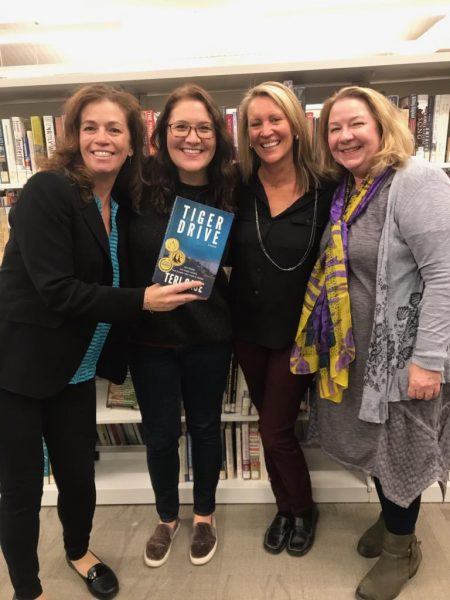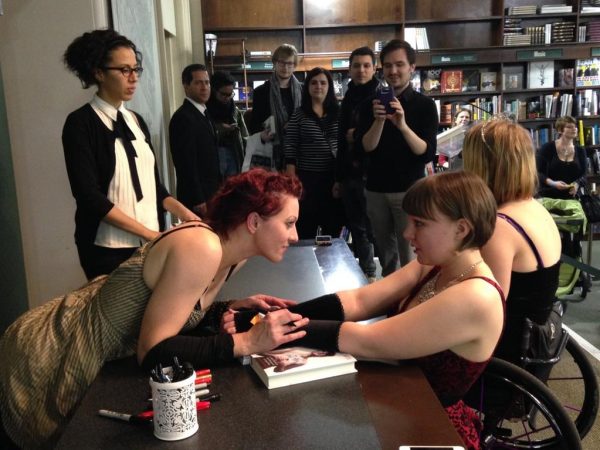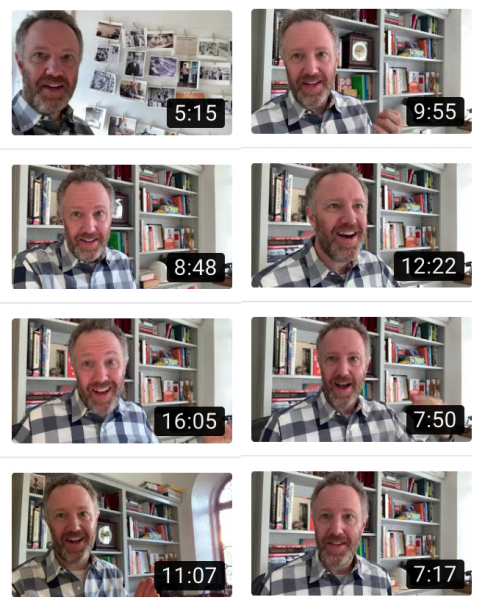Writer Teri Case sent me this photo recently:

She said this:
“I had my first book event in Washington DC and guess who surprised me? Colleen Waterston, Kim Hamilton, and Kathy Ramsperger. They came from Minnesota, Maryland, and Virginia just to support me. I know them because of you, we all met in your Mastermind!”
These writers are showing up to support each other. To truly see each other.
There is something profoundly powerful in this. This ability that we all have to simply recognize each other and what we create. That is why I do the work I do, and it is inspiring to see the photo above and how Teri, Kim, Kathy, and Colleen are seeing each other.
This reminded me of a photo I saw when Amanda Palmer launched her book, The Art of Asking:

Photo credit: Jimmy Franco of Grand Central Publishing
Amanda is on the left, reaching across the table to look into the eyes of one of her fans, Sarah Staalesen. There was a huge crowd waiting to see Amanda, and you can see signs of preparation to manage hundreds of people: the white tape on the floor, the rope designed to create boundaries between people, the handlers in the background trying to ensure books are placed correctly for signing, and much more that we don’t see in the photo.
This is the kind of thing that Amanda has done a lot in her career, to truly see those around her.
For your writing, your goal is likely to create deep human connection between your words and the reader. To have them feel immersed in the world or ideas you have created for them. This connection tends to extend to a similar kind of connection between the writer themselves and the reader.
 I remember hearing an interview with Brandon Stanton, who created Humans of New York. The interviewer, Tim Ferriss, wanted to understand how Brandon got people to share these powerful stories from a stranger in just 30 or 60 minutes. Tim asked about the questions Brandon asked, and this was his reply:
I remember hearing an interview with Brandon Stanton, who created Humans of New York. The interviewer, Tim Ferriss, wanted to understand how Brandon got people to share these powerful stories from a stranger in just 30 or 60 minutes. Tim asked about the questions Brandon asked, and this was his reply:
“It’s not the questions. I have about three or four entry questions that I use. “What’s your biggest struggle?” “How has your life turned out differently than you expected it to?” “What do you feel most guilty about?” But really, the planned questions are just springboards into a conversation. And how you get to that deep place with a person is absolute presence. It’s being 100 percent there. You’re not thinking in the framework of an interview. You’re not looking at a list of questions. You’re not thinking about your next question. You’re not thinking about how this person fits into your idea of them and what you know about them. You’re 100 percent there, and you’re 100 percent listening to them, and your questions are 100 percent coming based on curiosity about what they are telling you and nothing else.”
This is a power we all have. Simply to see each other. To recognize what we are each trying to create. It doesn’t require a “like” a “follow” or a “subscribe.” It is just showing up as a human being, and just validating who someone is and what they are creating.
A few years ago, I stopped teaching “online courses.” You know, the kind where you sign up and you drown alone under too much information. Instead, I developed a series of programs where I can give you direct feedback at each step of the way.
Which means I spend loads and loads of time recording videos that are meant for one single person. This is a typical day for me:

Each of these videos are created and sent to one individual writer. One of those writers sent me this feedback:
“It was powerful to see you respond directly to my questions.”
That meant a lot to me. What I want writers to feel is that they are seen and supported. That someone is on their team, helping to give personalized advice. To be in the trenches with them.
My days are spent immersed in the goals, challenges, and creative process of writers. This means my days are filled with an incredible richness of the creative process.
Is there a way you can “see” someone around you that would validate their creative vision, or that would offer a sense of support? You don’t have to take a complicated action to do this. Honestly, just recognizing what they are trying to create is enough to make someone’s day. It could be as simple as sending an email, asking a question, or just looking someone in the eye.
Thanks!
-Dan
